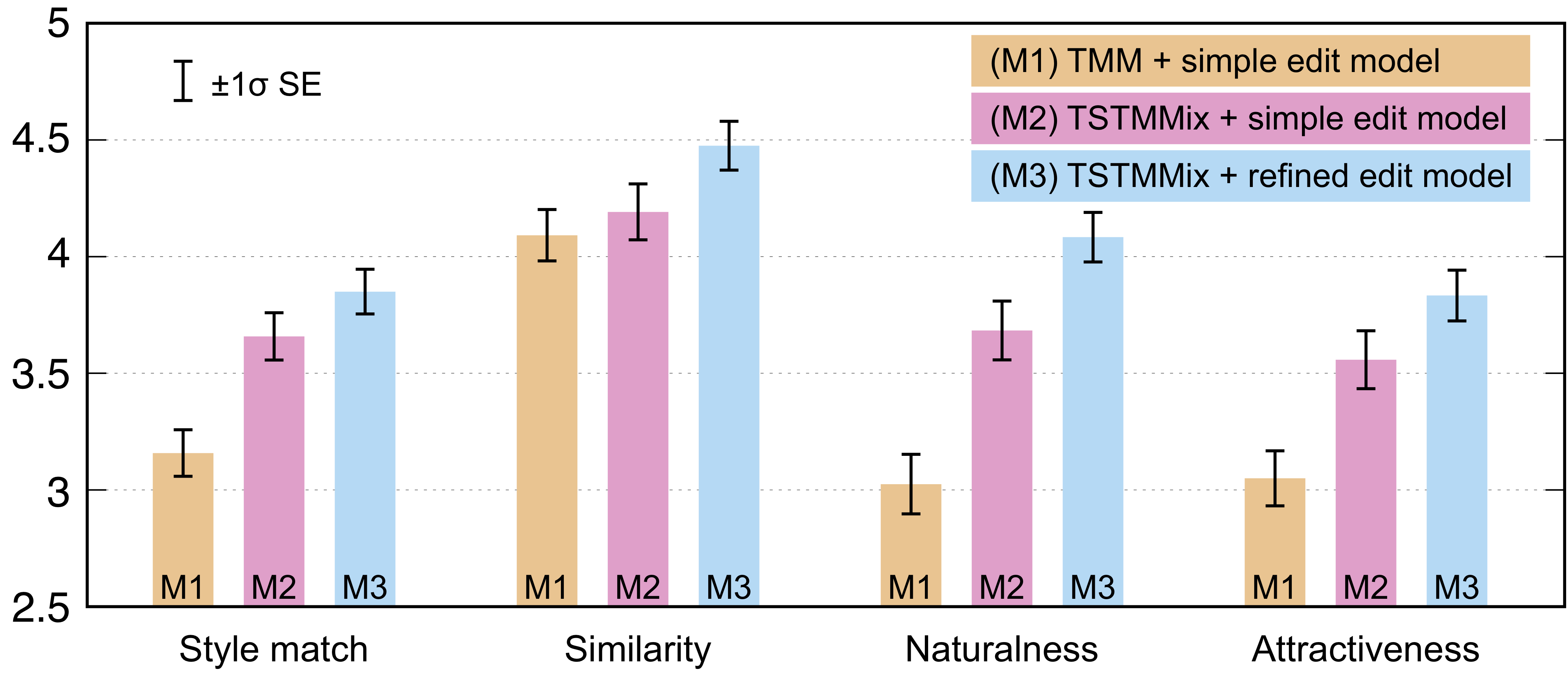1. Data
We use three sets of data belonging to different music categories.- (Western) classical music category
Dataset consists of soprano melodies compoased by Amadeus Mozart (7133 bars) - J-pop category
Dataset consists of vocal melodies compoased by a band Mr. Children (3878 bars) - Enka music category
Enka is a genre of Japanese popular music. The dataset consists of vocal melodies by various artists (37032 bars).
2. Unsupervised learning of music styles
We train a transposition-symmetric torus Markov mixture model (TSTMMixM) (see paper) from the dataset of each music category. Each component model is expected to represent music styles in each music category. Some examples of learned styles are visualized below.2.1. Styles in pitch organization
Pitch-class transition probabilities obtained by integrating out the rhythmic variables. Transition (bigram) probabilities are represented by bands.
Classical music style
(Major diatonic scale)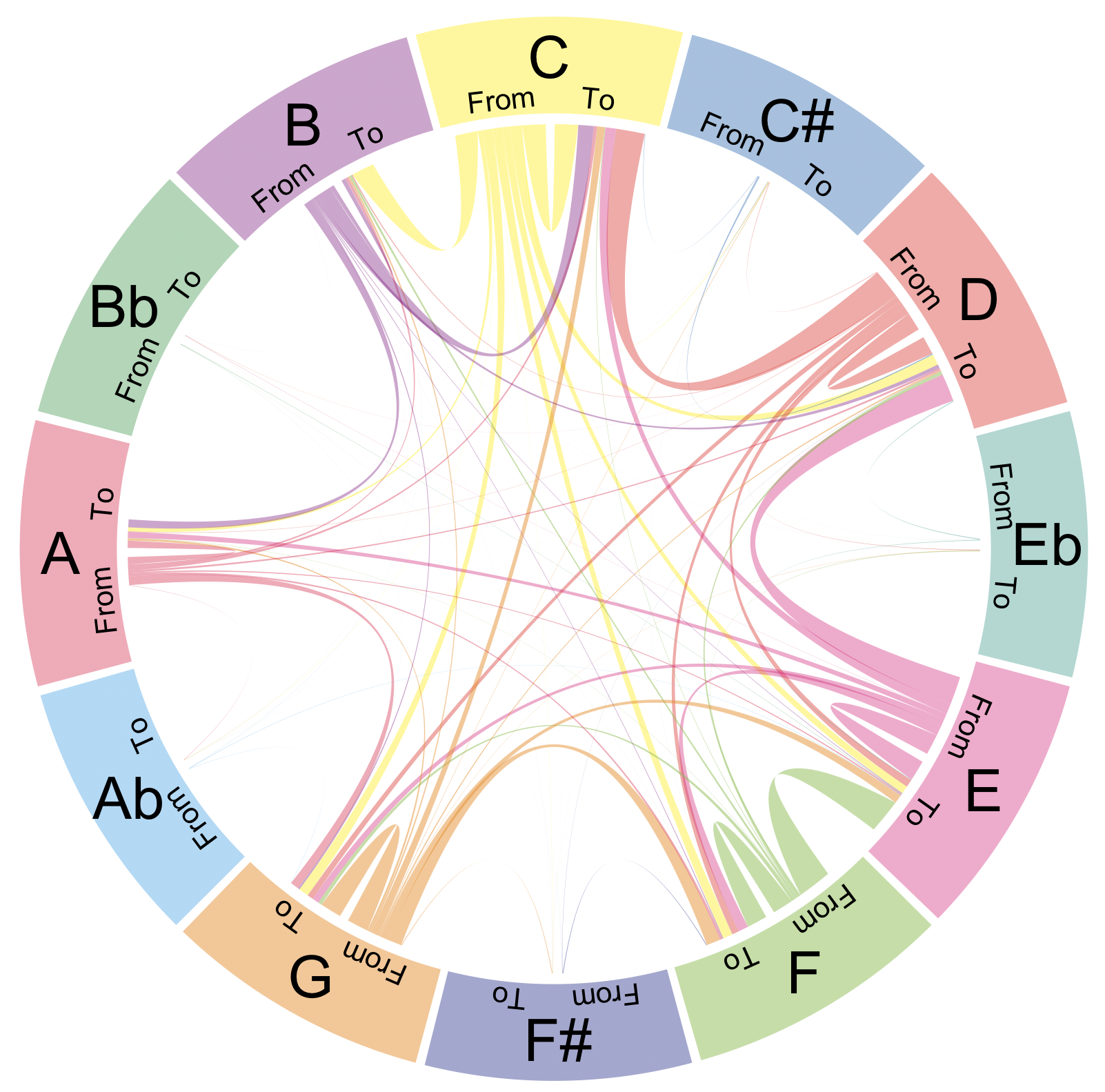
(Major diatonic scale)

Classical music style
(Minor diatonic scale)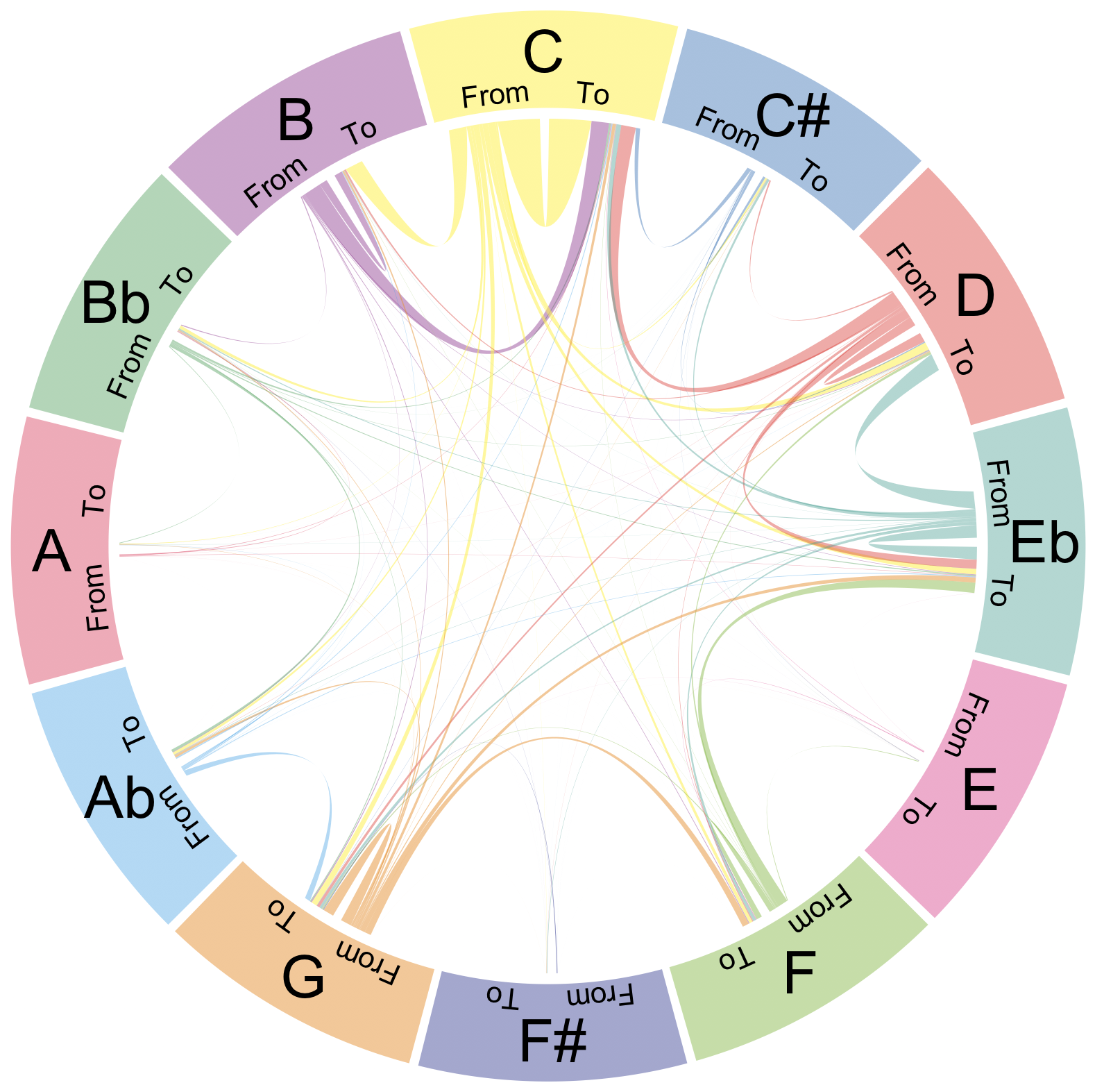
(Minor diatonic scale)

J-pop style 1
(Major diatonic scale)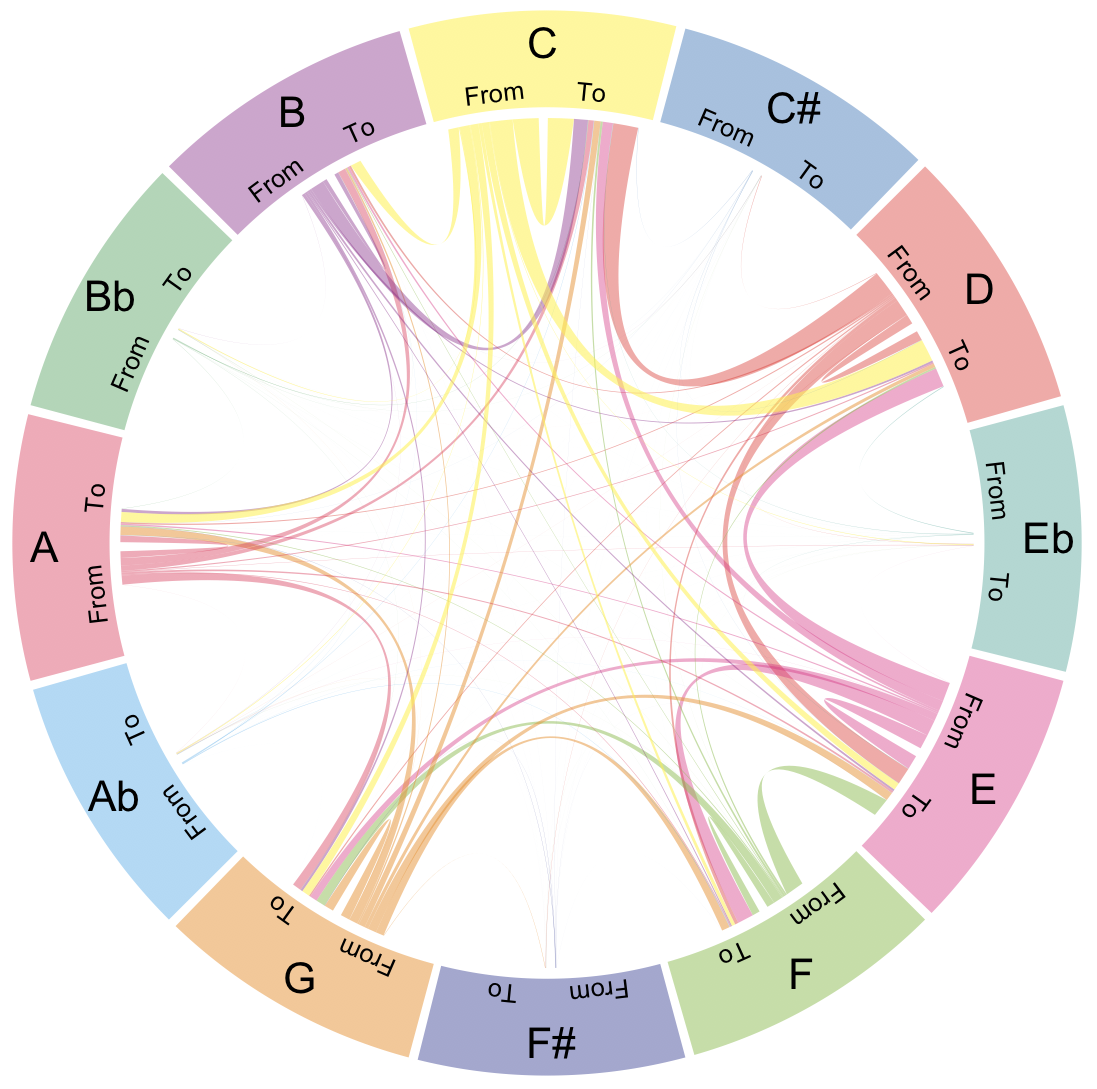
(Major diatonic scale)

J-pop style 2
(Minor diatonic scale)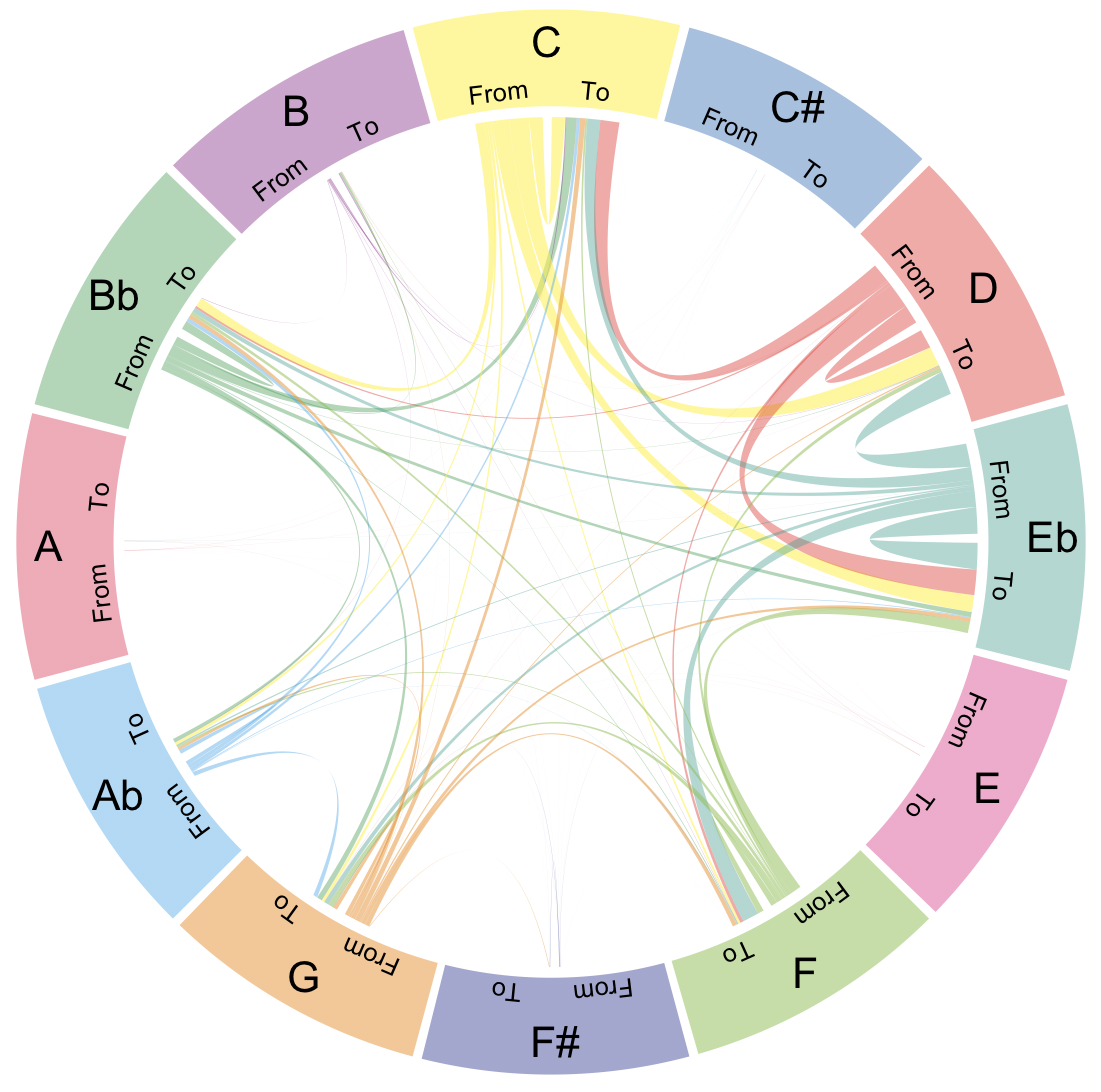
(Minor diatonic scale)

Enka music style 1
(Major pentatonic scale)
(Major pentatonic scale)

Enka music style 2
(Minor pentatonic scale)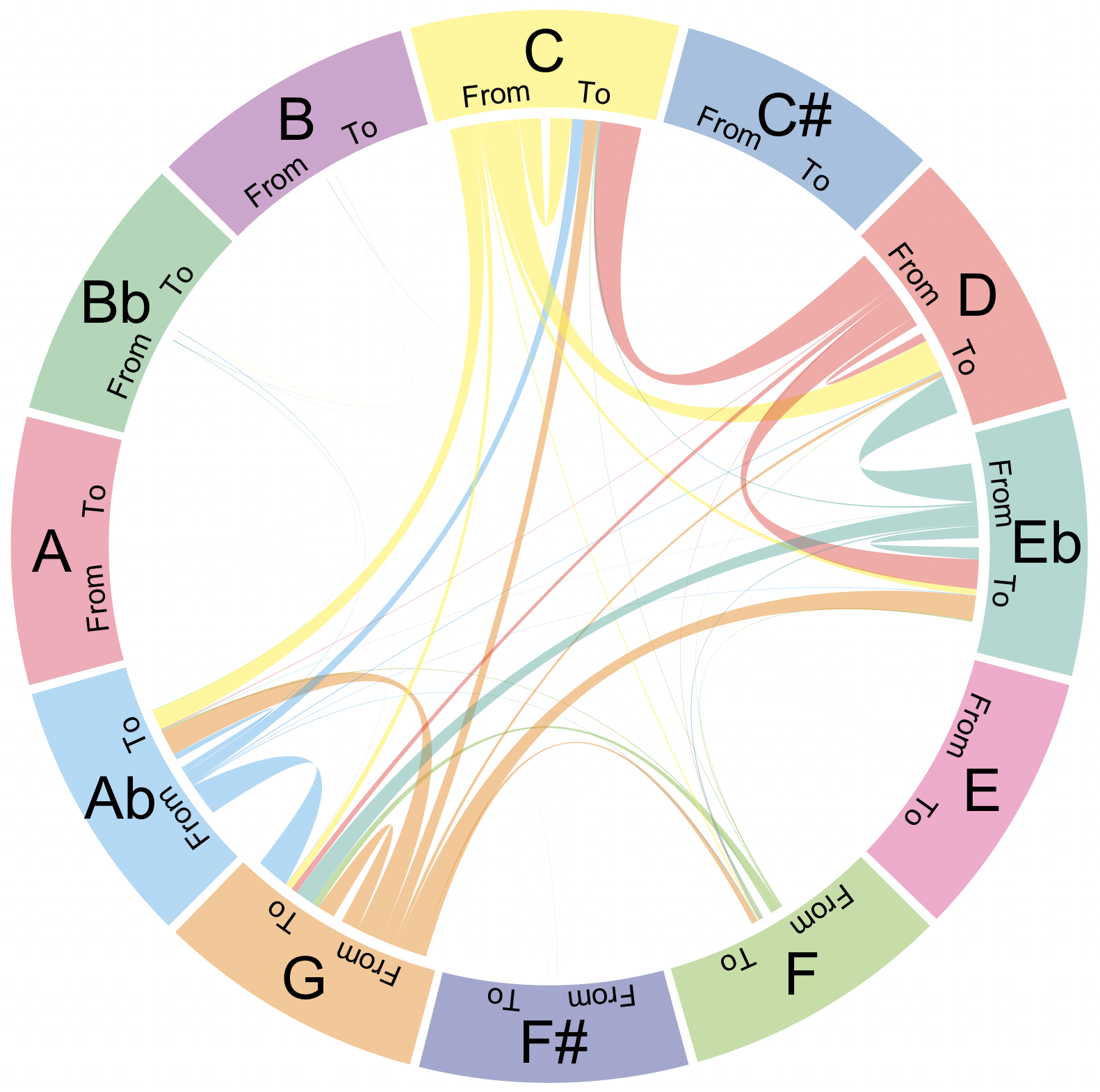
(Minor pentatonic scale)

2.2. Styles in rhythmic organization
Metrical transition probabilities obtained by integrating out the pitch-class variables. Transition (bigram) probabilities are represented by bands. Like in a clock, a metrical (beat) position in a bar (4/4 time) is represented on a circle. 0 o'clock, 3 o'clock, 6 o'clock, and 9 o'clock indicate quarter-note beats.
Classical music style
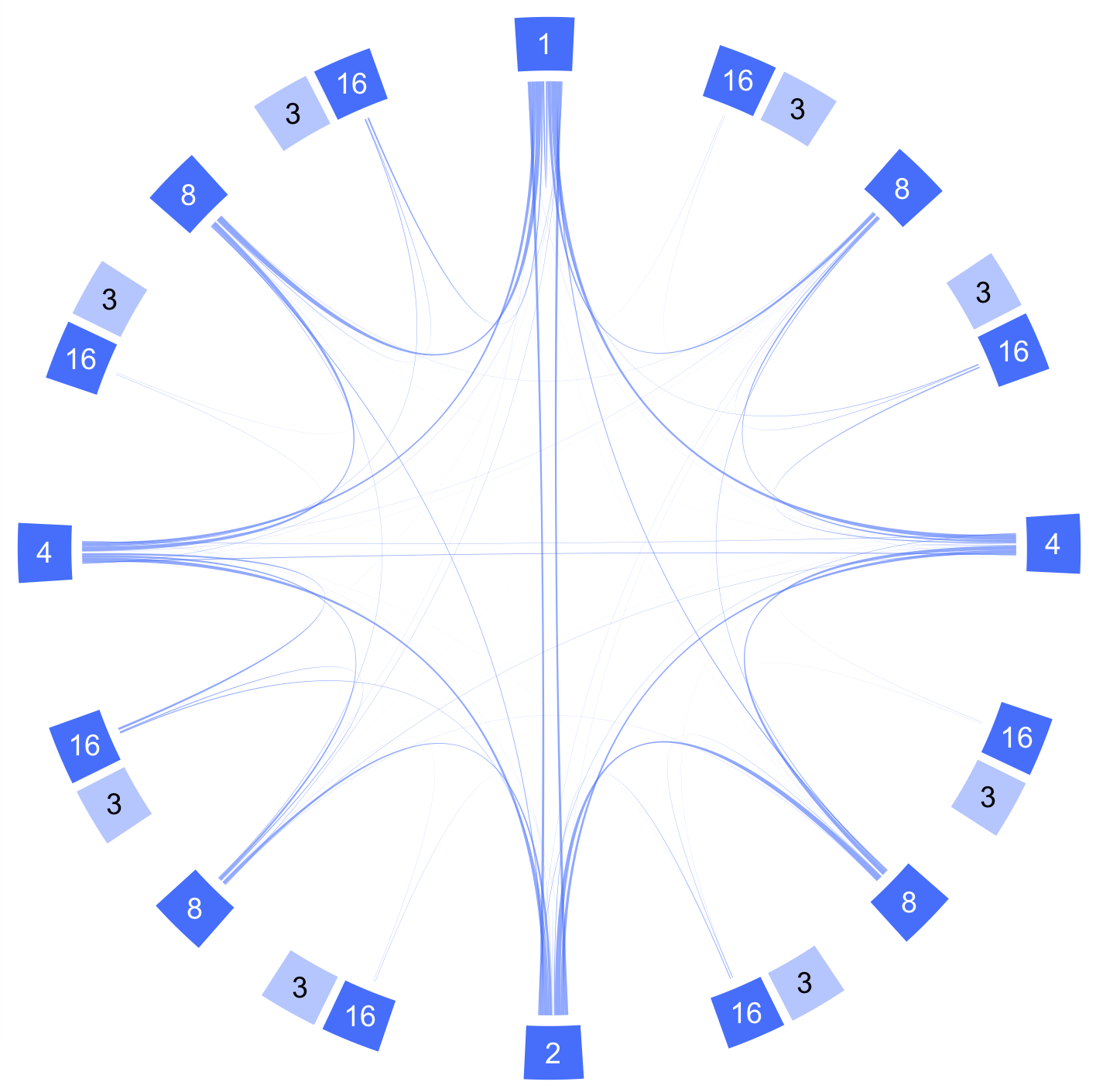

J-pop style 1
(8th-note rhythm)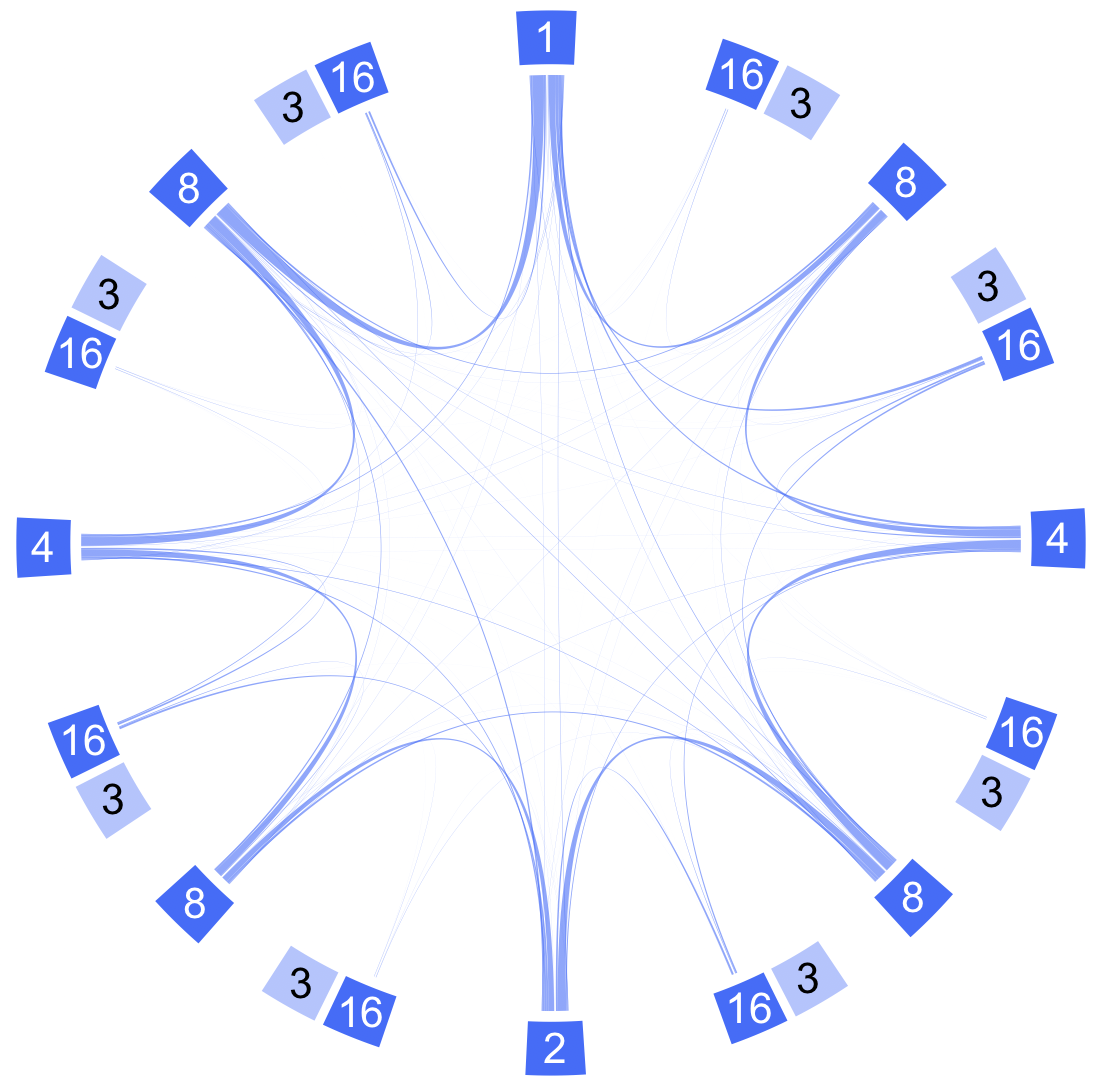
(8th-note rhythm)

J-pop style 2
(16th-note rhythm)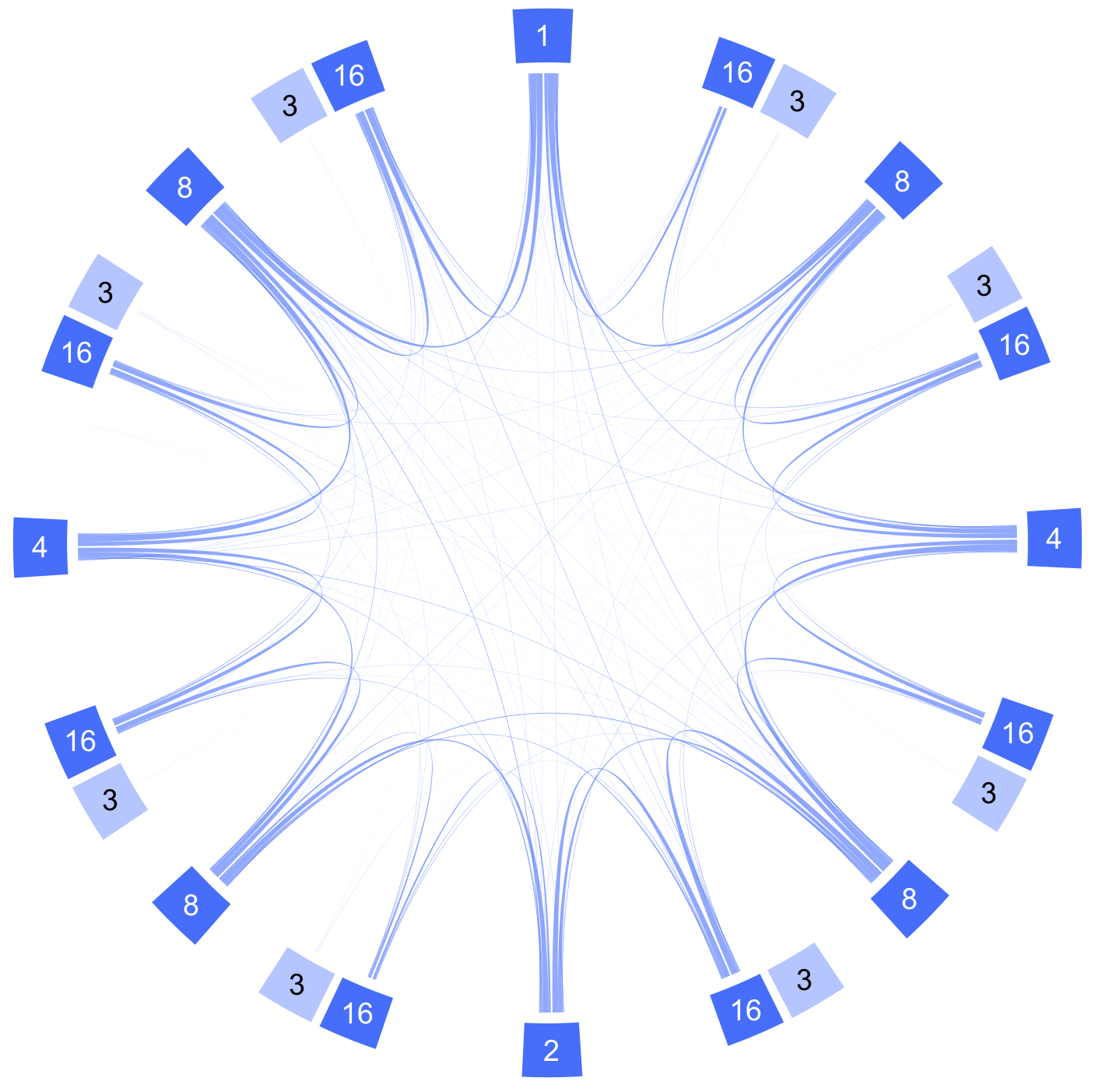
(16th-note rhythm)

Enka music style 1
(Mixed 8th-note rhythm)
(Mixed 8th-note rhythm)

Enka music style 2
(Dotted 8th-note rhythm)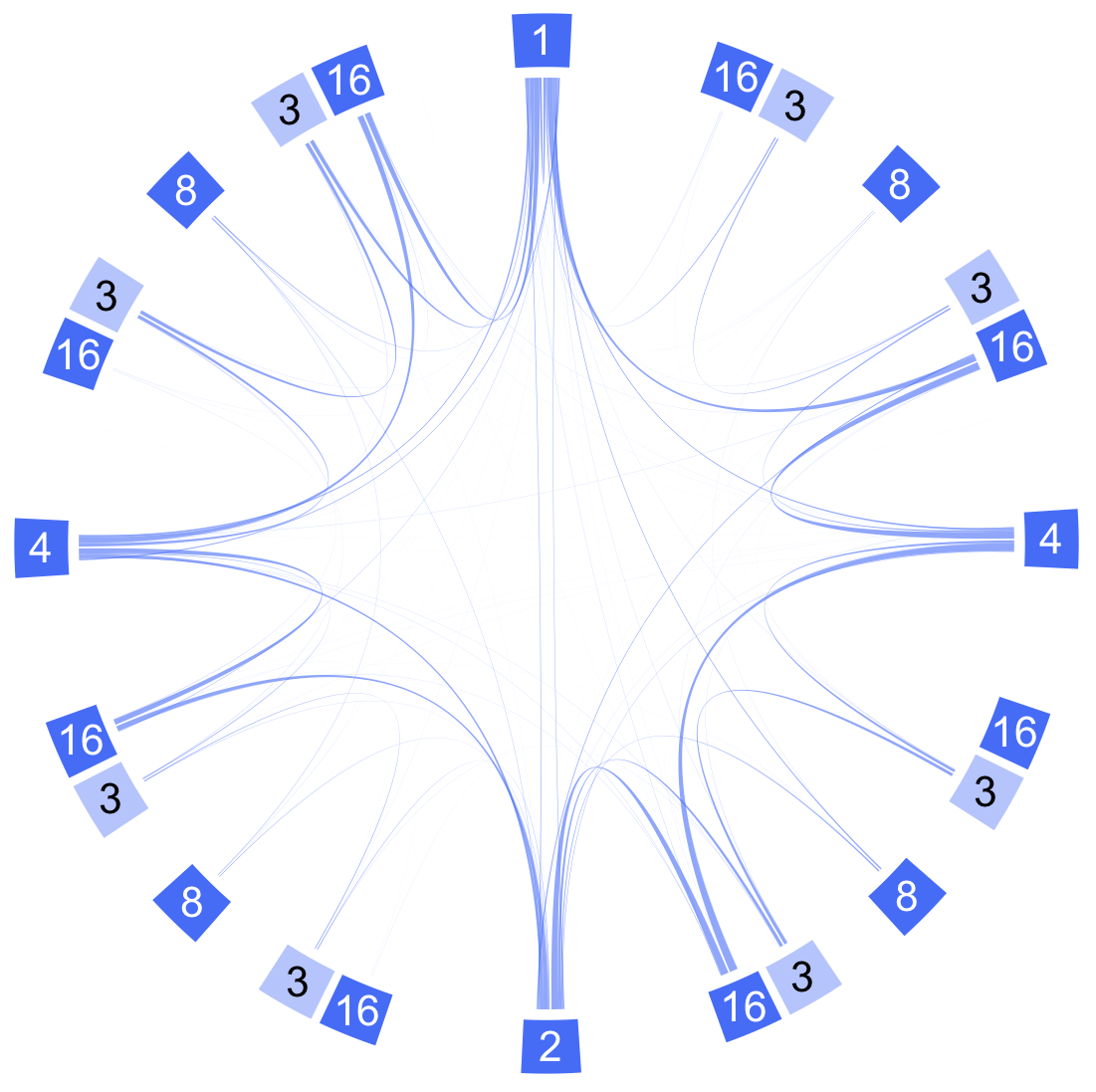
(Dotted 8th-note rhythm)

3. Sound examples
Each original melody (8-bar long) is converted to the target style. For comparison, we tested the following three methods (see paper for details):- TMM+SEM: Torus Markov model + simple edit model
- TSTMMixM+SEM: TSTMMixM + simple edit mode
- TSTMMixM+REM: TSTMMixM + refined edit mode
3.1. Classical to J-pop / Enka
Original melody (Classical music style)
Target: J-pop (TMM+SEM)
Target: J-pop (TSTMMixM+SEM)
Target: J-pop (TSTMMixM+REM)
Target: Enka (TMM+SEM)
Target: Enka (TSTMMixM+SEM)
Target: Enka (TSTMMixM+REM)
3.2. Classical to J-pop / Enka
Original melody (Classical music style)
Target: J-pop (TMM+SEM)
Target: J-pop (TSTMMixM+SEM)
Target: J-pop (TSTMMixM+REM)
Target: Enka (TMM+SEM)
Target: Enka (TSTMMixM+SEM)
Target: Enka (TSTMMixM+REM)
3.3. J-pop to Classical / Enka
Original melody (J-pop style)
Target: Classical (TMM+SEM)
Target: Classical (TSTMMixM+SEM)
Target: Classical (TSTMMixM+REM)
Target: Enka (TMM+SEM)
Target: Enka (TSTMMixM+SEM)
Target: Enka (TSTMMixM+REM)
3.4. J-pop to Classical / Enka
Original melody (J-pop style)
Target: Classical (TMM+SEM)
Target: Classical (TSTMMixM+SEM)
Target: Classical (TSTMMixM+REM)
Target: Enka (TMM+SEM)
Target: Enka (TSTMMixM+SEM)
Target: Enka (TSTMMixM+REM)
3.5. Enka to Classical / J-pop
Original melody (Enka music style)
Target: Classical (TMM+SEM)
Target: Classical (TSTMMixM+SEM)
Target: Classical (TSTMMixM+REM)
Target: J-pop (TMM+SEM)
Target: J-pop (TSTMMixM+SEM)
Target: J-pop (TSTMMixM+REM)
3.6. Enka to Classical / J-pop
Original melody (Enka music style)
Target: Classical (TMM+SEM)
Target: Classical (TSTMMixM+SEM)
Target: Classical (TSTMMixM+REM)
Target: J-pop (TMM+SEM)
Target: J-pop (TSTMMixM+SEM)
Target: J-pop (TSTMMixM+REM)
4. Subjective evaluation
4.2. Setup
We conducted a subjective evaluation test to measure the quality of melody style conversion. Here is the page used for the listening evaluation.10 evaluators who listen to music more than one hour a day participated the experiment; they listened to the above arranged melodies and evaluated each arrangment in terms of the following scores:
- Style match: Does the arranged melody match the target style? (1: very poorly , ... , 6: very well)
- Similarity: Do you feel the original melody? (1: very poorly , ... , 6: very well)
- Naturalness: Is the melody natural? (1: very unnatural , ... , 6: very natural)
- Attractiveness: Is the melody attractive? (1: not attractive at all , ... , 6: very attractive)
4.2. Result
